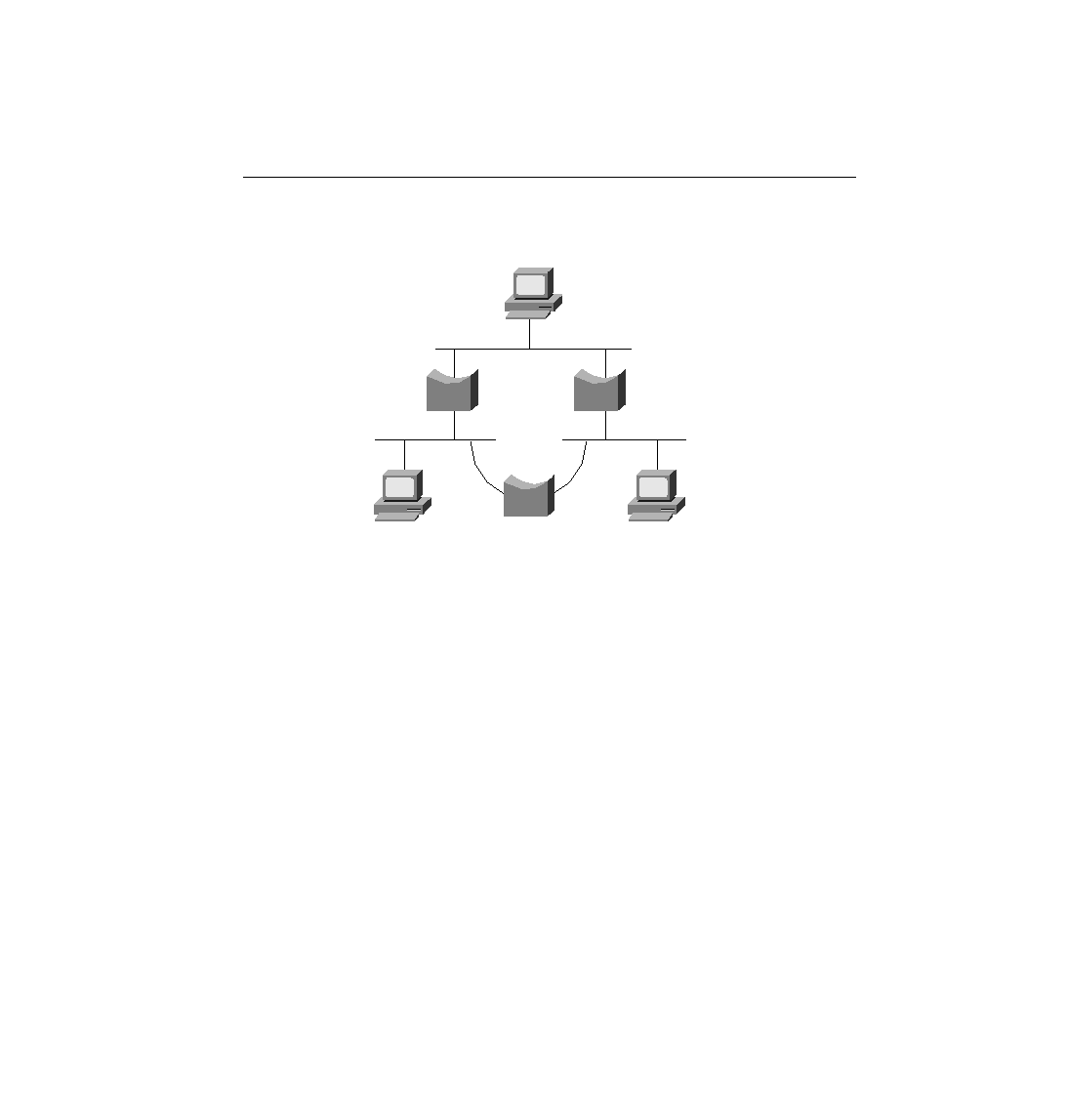
No mechanism defined in Ethernet marks the frame to be thrown away by a bridge, similar to
the way an IP router uses the time-to-live field. The frame destined to PC3 would be forwarded
because the bridges do not have PC3's MAC address in their bridge tables. Similarly, bridges
forward broadcasts on all interfaces, so if PC1 or PC2 sent a broadcast, the broadcast would
loop for a long time.
any part of that one path failed, the network would be broken into separate parts whose devices
could not communicate. So, there is a need for physical redundancy, but with only one active
path because transparent bridging logic will not tolerate multiple active paths. The solution is
to build bridged networks with physical redundancy and to use Spanning Tree to dynamically
block some interface(s) so that only one active path exists at any instant in time.
Tree must be avoided. Consider Figure 4-15, particularly Bridges 4 and 5. If a loop occurred in
this network, frames would rotate forever and the number of frames would grow. A frame on
either segment that both Bridges 4 and 5 are attached to would be forwarded by both bridges,
duplicating the frames. In a few short seconds, all LAN segments would be filled with copies
of the frames that occurred during the loop, possibly preventing the Spanning-Tree Protocol
from completing its task of re-creating the loop-free environment.